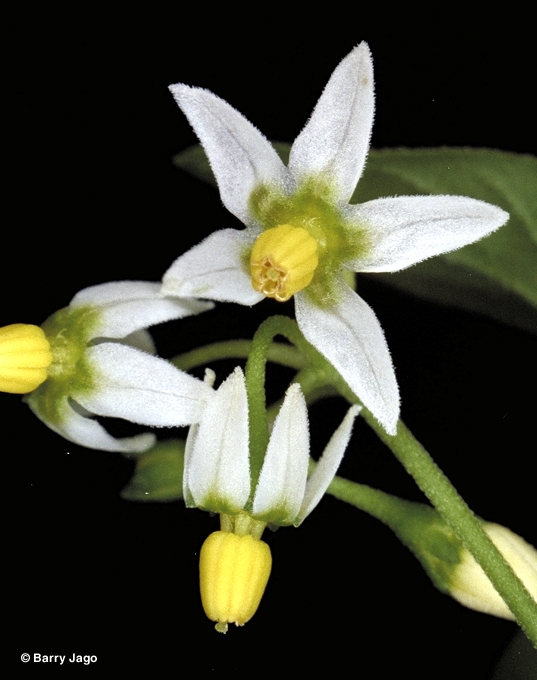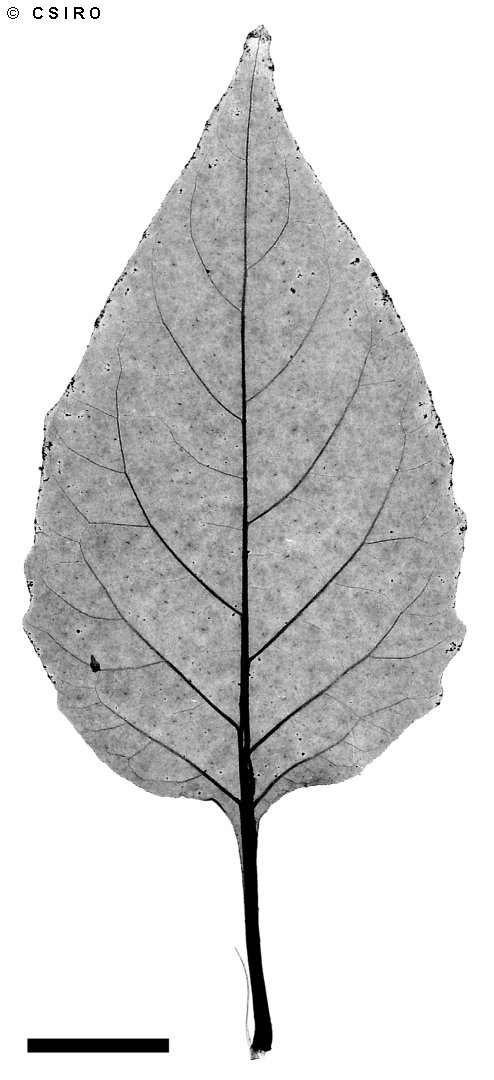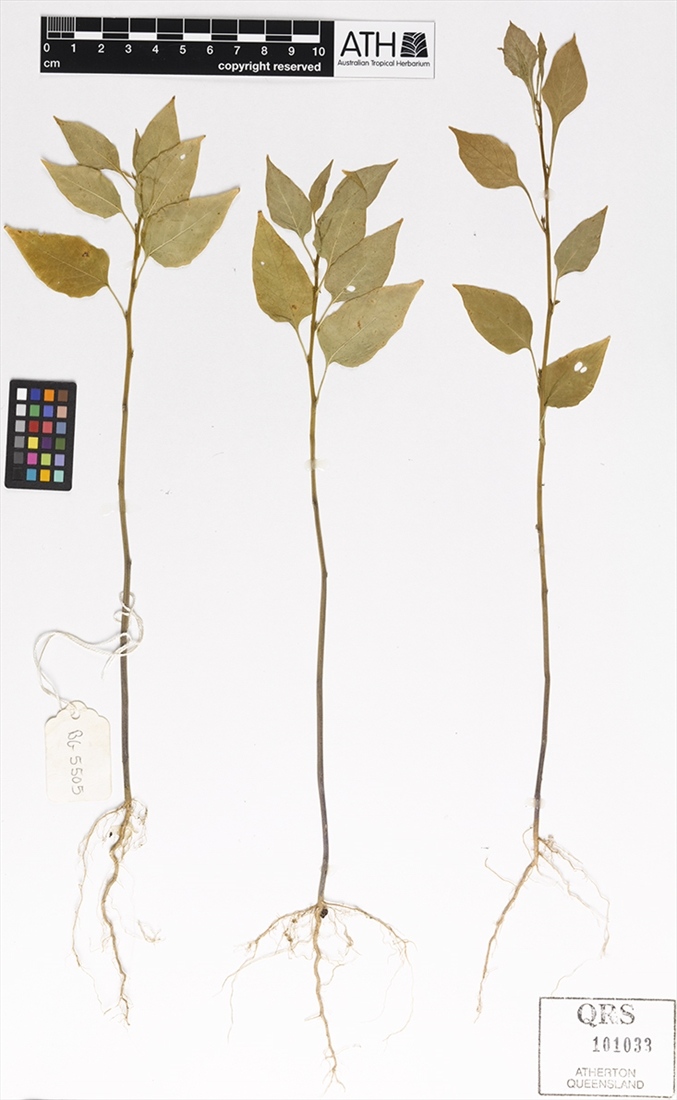Australian Tropical Rainforest Plants - Online edition
Solanum nigrum L.





Linnaeus, C. von (1753) Species Plantarum 2: 186. Type: Central Asia, Herb. Linnaeus no. 248.18; lecto: LINN. Fide R. J. F. Henderson, Contr. Queensland Herb 16: 25 (1974).
Nightshade, Blackberry; Black Nightshade; Blackberry Nightshade; Nightshade; Nightshade, Black
Usually flowers and fruits as a herb but also flowers as a shrub.
Leaf blades ovate, about 3-13 x 1.5-7 cm, petioles about 1-7 cm long.
Inflorescence leaf-opposed, short, 4-12-flowered, pedicels about 7 mm long. Calyx about 1.5-2.2 mm long, lobes triangular, about 0.3-1.2 mm long. Corolla about 8-12 mm diam. Anthers about 2 mm long.
Cotyledons ovate or broadly lanceolate, about 5-6 x 3-4 mm, apex apiculate, base cuneate to attenuate, petiole about 5 mm long. First pair of leaves ovate, sparsely hairy on the underside, petioles long and slender. At the tenth leaf stage: leaf blade ovate or broadly lanceolate, apex acute to attenuate, base cuneate, margins usually indistinctly lobed. Petiole long and slender. Seed germination time 12 to 13 days.
A cosmopolitan weed, now naturalised in WA, NT, NEQ, CEQ and widespread in all Australian states. Altitudinal range from 150-1500 m. Usually grows as a weed on agricultural land but also found along roads and in disturbed areas in rain forest.
Several species have been included under this name, and, because of this, it is difficult to draw conclusions about toxicity. Most cases of suspected poisoning have been due to ingestion of leaves and unripe fruit. (Everist 1974).
Ripe fruits are sometimes eaten by adventurous people but in view of the confusion prevailing in the taxonomy and nomenclature it would be wise to be cautious with this species.
This species may have medicinal properties.
This species has been used medicinally in many parts of the world. It has a reputation as a poison plant; leaves and green fruits contain steroid drugs and can be used as a source of solasodine. Cribb (1981).





